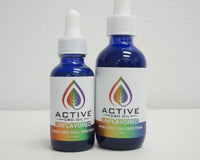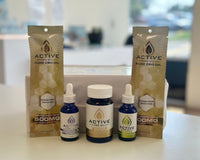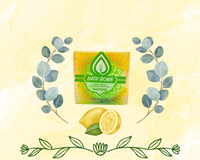As we head into the warmer months here in Colorado, we need to be wary of excessive sun exposure. At our altitude there is less atmosphere to block sunlight than at lower altitudes, so we are naturally exposed to elevated UV levels. This leads to a higher incidence of skin cancer, and even short-term exposure can lead to sunburn and other types of skin damage associated with UV rays.

There are preventive measures we can implement to minimize the potential damage caused to our skin: staying hydrated is of the utmost importance not only for our skin but our entire body. Layers are another primary way to not only block the damaging rays of the sun, but also stay prepared for our constantly changing weather; even if it's sunny now, it will probably be raining later. When choosing layers, note that cotton garments typically have an SPF of five and that diminishes if wet. Opt for polyester, rayon or better still, hemp as they are typically SPF 50 or better. A broad-brimmed hat is a great way to limit those damaging sun rays and will protect the often forgotten areas where skin cancer is seen in high incidence. The part in your hair and the ears remain a common spot for skin cancer and a hat made of the proper material combined with sunscreen is the best defense.

Sunscreen is recommended year round here in Colorado. However, many commercial sunscreens are unfavorable to our skin health. Typical ingredients in chemical sunscreens have been found to disrupt hormones and have an increased incidence of an allergic reaction. Mineral sunscreens seem to be a preferred option, however more research needs to be done on the environmental impact of nanoparticle zinc and titanium dioxide, and inhalation of these minerals can have a severe health impact. You may wish to consider making your own sunscreen at home, and carefully tailor it to your skin type to avoid the common issues found in commercial options. Some ingredients to consider are red raspberry seed oil, carrot seed oil, hemp oil, and shea butter among others. All these have an SPF of five to 50 so do some research and find which will work best for your skin type. If you find yourself up in the beautiful Rocky Mountains and have forgotten your sunscreen look for aspen trees: that white dust you get on your hands when you rub the trunk typically has an SPF of five, which is not great but better than nothing.

When you have accidentally gotten too much direct sun and are suffering from sunburn, be sure to give your skin some healing relief. Active CBD Oil salve contains beeswax, olive oil, hemp derived CBD, arnica, calendula, and rosemary. Research suggests calendula, rosemary, and CBD all have anti-inflammatory properties. Sunburn is an inflammatory response, so these ingredients may be helpful in obtaining relief when the sun gets the best of our skin. Research suggests rosemary has the added benefit of repelling flies and mosquitoes.

Direct sun exposure in minimal doses is necessary for optimal health, the WHO (World Health Organization) recommends 5 to 15 minutes of casual sun exposure two to three times a week. Our bodies need this exposure to produce vitamin D, vitamin D is essential in healthy growth and inadequate levels have been tentatively linked to skin cancer, hypertension, obesity and a number of other ailments prevalent in North America.


























